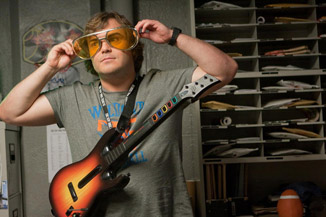|
|
Book vs. Movie: Gulliver's TravelsBy Russ BickerstaffDecember 28, 2010
As things progress, Gulliver is captured again and rediscovered by sailors bound for England - a journey cut short by attacking pirates who strand him on an island. He is soon rescued by an island in the sky — a nation known as Laputa. It is devoted to music and mathematics, but completely incapable of finding any practical use for such things. And so the adventure continues. Gulliver’s journeys cover a lot of thematic space. Numerous intellectual concerns are raised in the book in interesting ways. At its best, these relatively dull moments of academic intellectual pursuits are paired against a backdrop of some fantastic land. Appealing to both intellectuals and those interested in a good adventure, the book does an admirable job of reaching both audiences. The Movie The film distances itself from Swift’s book right away. Set in contemporary times, the film stars Jack Black as a slacker who works in the mailroom for a newspaper in New York. The character of Gulliver in the book is never explored in all that much depth beyond what happens to him. Far more character-based, the film spends the first third of its roughly 90 minutes establishing the character of Gulliver before he embarks on his journey. While not entirely at ease here, Black delivers a screen presence that’s charming enough to carry a more character-driven adaptation of the story. We meet Black’s Gulliver as he is showing around a new employee who will be working with him. Black’s slacker personality is contrasted against the upward mobility of his savvy of his trainee. A failed attempt at asking out the editor of the travel section turns into an assignment to travel to the Bermuda Triangle as a travel writer. This finds Gulliver traveling alone on a tiny boat into extremely bad weather. When he wakes, he has been tied down by Lilliputians and we are just over a half an hour into the film.
[ View other columns by Russ Bickerstaff ]
[ View other Book vs. Movie columns ]
[ Email this column ]
|

|
|
|

|
Friday, April 26, 2024
© 2024 Box Office Prophets, a division of One Of Us, Inc.


